The First Videos of Alligator Alcatraz Came From a Janitor Trying to Go Viral.
Lights on 24/7. Subzero AC in tents. No showers. No sunlight. No lawyers. Just cages, guns, and silence.
The first rule of a concentration camp is isolation—not just from family, or legal counsel, or the country that disappeared you, but from the idea that anyone, anywhere, still remembers your name.
At Alligator Alcatraz, there are no windows. No outdoor time. No darkness. The lights stay on twenty-four hours a day. The air conditioning is set to near freezing. Detainees sleep in cages under tents that glow white all night, under surveillance, under silence. There are no clocks. No visitors. The noise comes from the vents and the footsteps and the keys. But never the voices of the men inside.
It is not even officially a prison. It’s a “processing center.”
It’s ran entirely through government contractor GardaWorld, who got an $8 MILLION dollar contract this year to run the camp. All thanks to the Trump administration.
A place that we know now that the state department plans to send women, children and the elderly to. That’s what makes it worse.
Deprivation of natural light and time is a method of psychological torture used at Guantánamo, in black sites, in solitary units from California to Xinjiang. It disorients the brain. It dissolves memory. It flattens emotion into survival. Over time, it strips away identity. The United Nations defines it as a human rights violation. In America, we now call it policy.
One janitor lasted only a few days.
On his Snapchat, two nights night before he was fired, he shared from his pod in the camp, “Y’all not gonna see this nowhere else. I’m showing y’all the first week… they treatin’ this like Hitler shit back then 🤦🏽♂️… it’s nothing like that. At least right now it ain’t”
But before he knew it, he was fired. Terminated for recording inside of the facility. It was not long after that his tone changed. There were no more jokes or smiles. He told everyone on TikTok live,
“It’s a fucking concentration camp.”
He’s disappeared from the job. The camp hasn’t.
He Didn’t Leave. He Got Thrown Out.
He didn’t leave because of what he saw. He left because he got fired.
For four days, he showed up, did the job, made his content. He rode the trucks across the compound, joked about the cold, filmed the tents, and laughed at the setup like it was something out of a movie. He didn’t describe it as torture. He didn’t raise the alarm.
Not until they kicked him out. He wasn’t warning anyone. He was building a following. Then they found his posts. Pulled him from the floor. Put him on unpaid leave. Investigated. And fired him.
Only after that did the tone change.
But before he was fired, he posted a few clips. A clip inside of the tents. A ride to the bathroom in a truck. A few seconds of fluorescent lights and silence. Some went on Snapchat. Some on TikTok. Most of them are gone now… either deleted, removed, maybe archived.
In one clip, he can be seen smiling and dancing in the bathroom.
But today on TikTok live, he said he has more.
More footage but he won’t share it. Not unless he’s paid. Not unless someone gives him a reason to risk what’s left. “I need a lawyer,” he said. “I got fired for this.” He’s not trying to be a hero. He just wants protection. A check and a guarantee.
So, until then, the only firsthand images of Alligator Alcatraz exist in fragments — flickers from a phone screen, posted by a man who didn’t speak out until he lost his job. No press has been allowed inside. No members of Congress. There is no inspector general making sure it’s humane. You aren’t allowed access to a lawyer.
As of now, janitor’s deleted clips scattered across reposts, half-remembered livestreams, and dead links may be the only evidence anyone ever sees.
I have several of them myself that I’ve saved, and I took notes. Because I won’t forget. I won’t allow this to be forgotten. and I promise you I won’t charge you to know what I know. My articles will never be behind a paywall.
But everyone, please just know that this is how the camp survives… how all concentration camps survive. It’s not by hiding, but by making sure no one looks too closely, and if they do? They’re immediately removed and placed on a “do not return” list.
Inside the Camp
There are no fire alarms in Alligator Alcatraz.
No sprinklers, smoke detectors or fire suppression systems. If a fire were to break out, there would be no warning system in place to alert the men inside. The structure is entirely temporary, built from industrial tents and aluminum framing, but the risk is permanent. The space has been designed to hold people, not to protect them.
Inside the tents, the temperature stays cold enough to sting.
Industrial air conditioners run without pause, pushing a constant current of freezing air across rows of metal cots. Each detainee is given a thin blanket and a pillow upon arrival. There are no additional layers. There is no climate control inside the cages. The cold is part of the condition.
There are no private bathrooms.
In the center of every cage stands a single metal urinal that’s fully exposed, visible to everyone around it. There are no walls or partitions, no place to wash, and no functioning showers for detainees. Staff have not reported access to hygiene supplies or clean changes of clothing. The urinal is not an exception to the design. It is the design.
The lights never turn off.
Fluorescent panels mounted to the steel beams above remain lit twenty-four hours a day. The tents glow at night from the inside out, visible even from a distance. There is no nightfall, no morning, no evening just a sustained white light that removes all sense of time. There are no windows. No clocks and no sun. Detainees lie on their cots beneath constant surveillance, wrapped in blankets, watching the light without blinking. The gates have keypads. The inmates never leave the cages.
There is no noise inside the cages beyond the mechanical.
No music, no voices, no televisions. Many of the men do not speak English. Most of the staff do not speak Spanish. There are no translators. There are no posted instructions or visible policies. The men are not told how long they will be held or what their legal status is. Some, according to staff reports, have green cards. Others face criminal charges. Most remain in silence.
The “facility” is built to house 3,000 but the former janitor stated there were no more than 500 people there when he’d been terminated.
Meals are served once per day, sometimes twice.
The food is not spoiled, but it is limited. There is no consistency in portions or timing. Water is controlled. Staff who attempted to give out extra food or water were reportedly reprimanded, or in some cases, fired. One resigned after being warned not to interfere. Another was removed after trying to pass an extra bottle of water to a detainee. Attempts to humanize the system were labeled breaches of protocol.
The janitor who shared this information worked the night shift.
On TikTok live, he said he did not witness physical abuse during his time at the camp. He did not see anyone beaten or hear reports of spoiled food.
He said most of the people building Alligator Alcatraz were Hispanic. The ones driving the trucks, setting up the cages, working the night shifts in silence. The ones keeping the lights on. The ones locking the doors. They didn’t need guards with guns. They had the same men this country would cage if the wind shifted.
They were building the thing that could one day swallow them whole.
But what he described, in detail, was a system that did not need violence to achieve its goal. All that they really needed was 24/7 lights, ice cold rooms, and starvation. All it takes to keep a population docile.
This is not a jail. It is not a detention center with due process or oversight. It is not designed to hold people for a fixed term or specific charge. It is a space engineered to keep them still, out of sight, and indefinitely forgotten.
Those Who Do Not Learn From History..
In 1933, before the ovens, before the camps had names the world would never forget, Germany opened a facility at Dachau. It was not called a death camp. It was called a protective custody center. People were held without trial. They were separated from their families. They were kept behind barbed wire. At first, the government insisted it wasn’t that bad.
In 2025, the United States has built Alligator Alcatraz. It is not called a prison. It is called a processing center. People are held without trial. They are separated from their families. They are kept behind chain-link fences in a tent surrounded by swamp. The government insists it isn’t that bad.
They will tell you this is not a concentration camp.
They will point to the food, to the air conditioning, to the lack of mass graves.
They will tell you that it’s legal, that it’s temporary, that it’s policy. But they won’t show you the cages. They won’t show you the inside. They won’t let you look for yourself. Because if they did, you might see what it really is.
There are no fire alarms. No windows. No outdoor time. No contact with the outside world. No clocks. No lawyers. No language. No sound. The men inside are not being punished for a crime. They are being held until the state decides what to do with them. Until they agree to disappear themselves.
Nick Hope was just a teenager when he survived Dachau. Decades later, the terror had not loosened its grip.
“Still, there are nights his dreams take him back to horrendous, starving years in Germany at Dachau concentration camp. ‘I say, "No, no, no. Everything is over. Everything is over,"’ Hope said.
But it wasn’t over. Not really. The barbed wire is back. The language has changed, but the structure remains. The ghosts of the past are watching now not just to remind us, but to warn us.
This is not the end of a horror story. This is how one starts.
Note From The Author:
I don’t put my work behind a paywall. These stories are too urgent, too raw, too real to keep locked away.
When 90% of mainstream media outlets are owned by 6 billionaires, it’s becomes hard to know who to trust. I don’t take checks from billionaires, and I don’t take notes from PR firms. I just tell the damn story because I’m not part of the mainstream media.
My belief is that almost everyone has their angle, their agenda. The truth is usually hiding somewhere in between. And that’s what I’m chasing.
I don’t need to sanitize what’s happening. I’ll just tell it like it is.
But independent journalism takes real time, risk, and resources. If you value reporting that doesn't cower, that names names and shows receipts, please consider subscribing.
To stay in the loop, you can subscribe for free. It helps build awareness and keeps the pressure on. But a paid subscription helps me keep digging, filing FOIAs, verifying sources, and staying on the story long after the headlines fade.
Thank you for being here.
— Dissent ♥

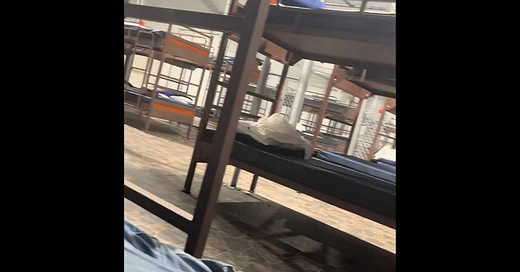


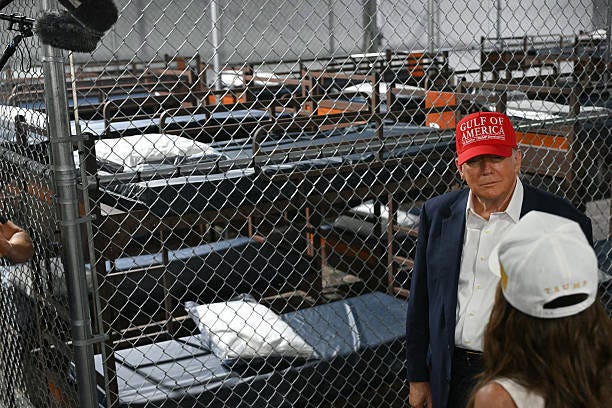


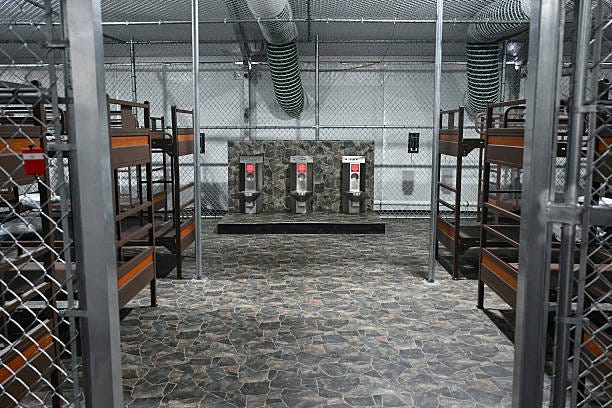

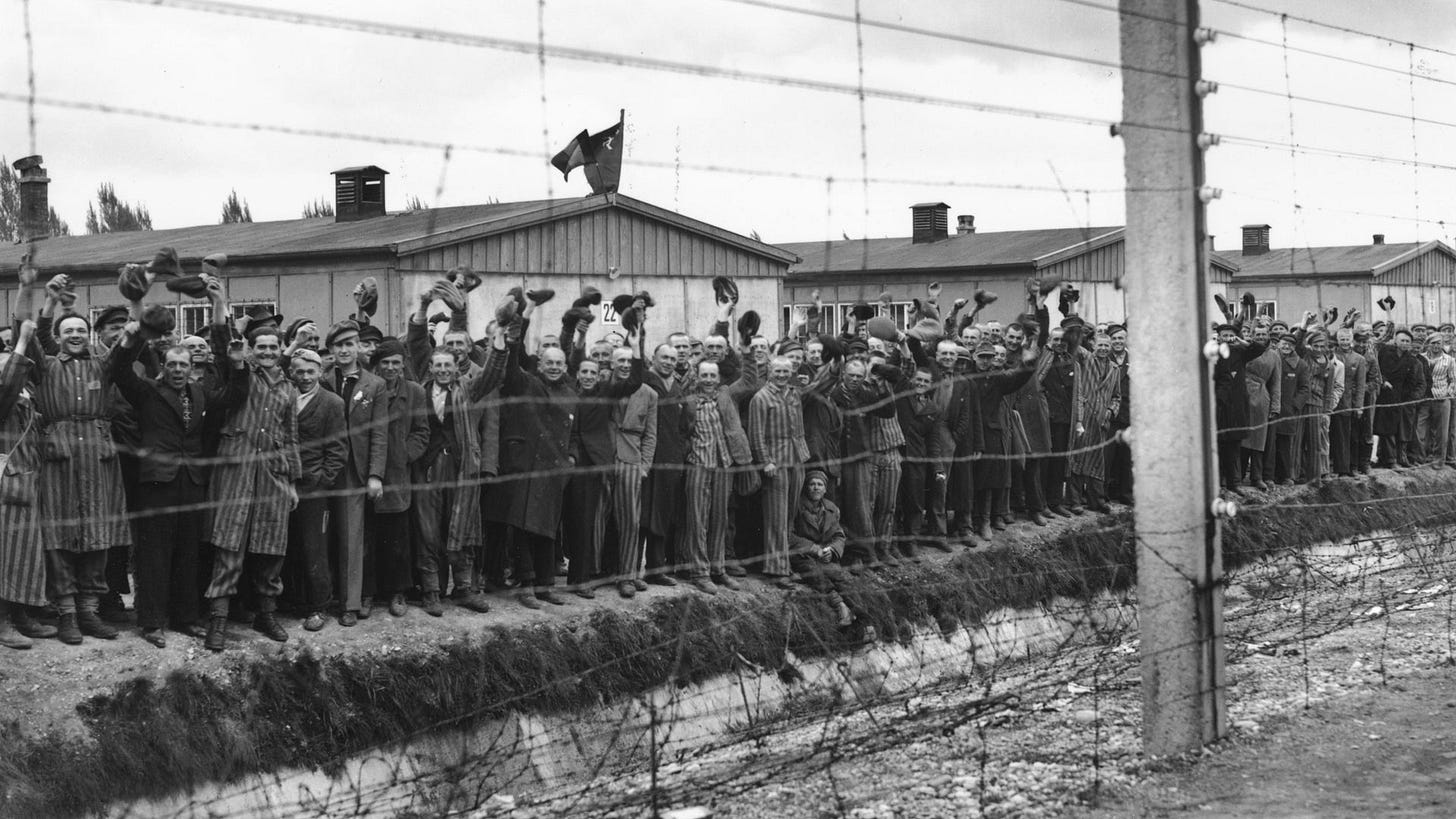
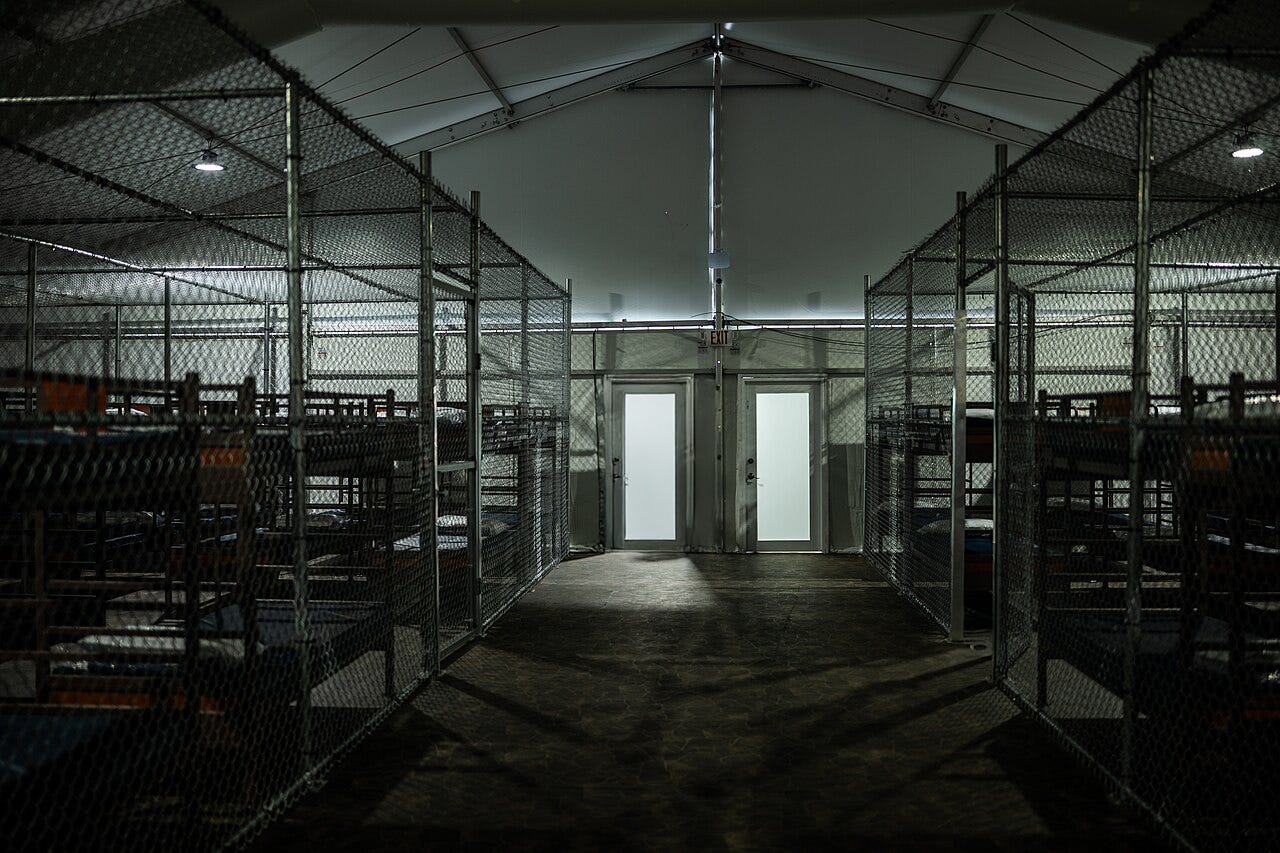

May every member of this administration spend their last days there.
Crimes against humanity.